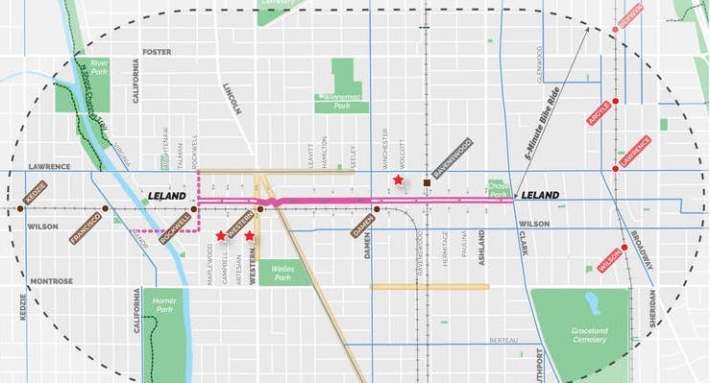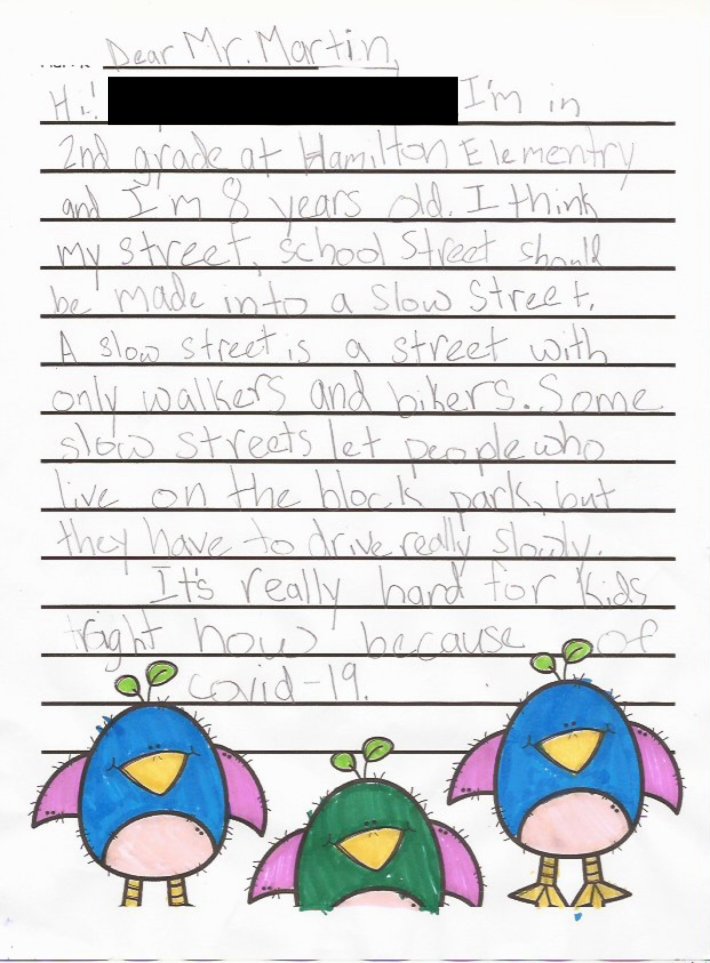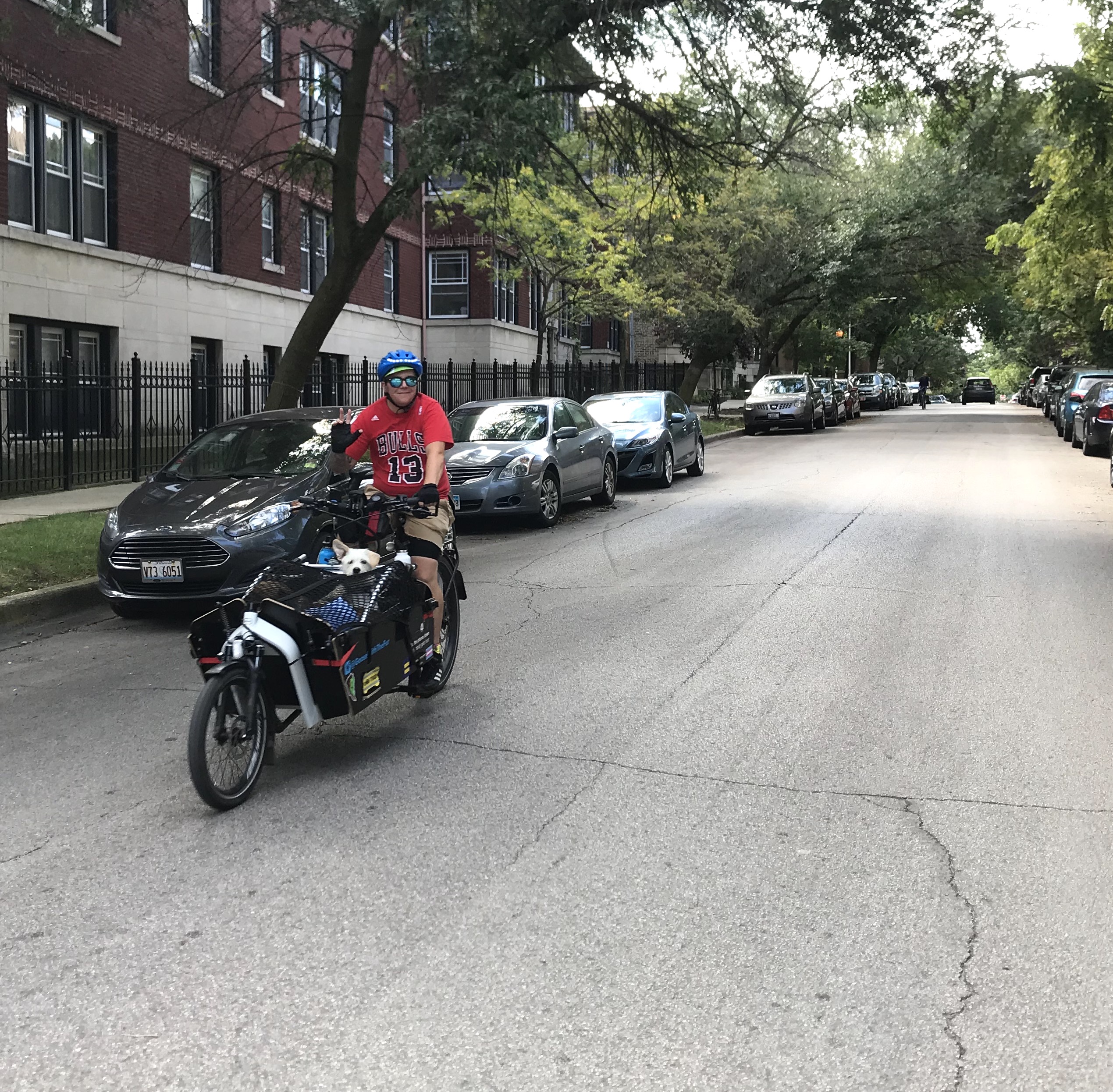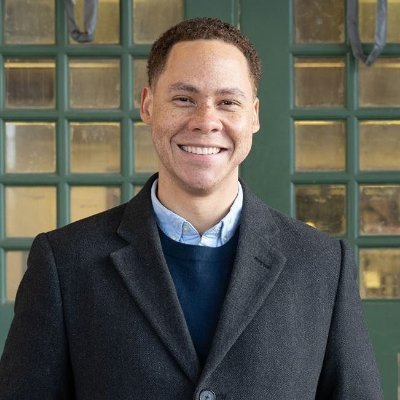The moment that Chicago residents have been pushing for over two months is finally becoming a reality. On Friday Chicago will doing its first official walk/bike intervention to address pandemic transportation issues as the Leland Shared Street becomes a reality.
Just about every other blue-state big city has already opened streets during the pandemic to provide more room for safe, socially-distanced walking, running, and biking to enable essential trips and physical activity. Oakland's “Slow Streets, which involve prohibiting through traffic on side streets to allow pedestrian activity in the road (parking, deliveries, pickups and drop-offs allowed), has been particularly successful.
But yesterday Streetsblog reader Kevin Zolkiewicz tipped us off that a city permits webpage showed four routes designated as "Shared Streets for physical distancing":
- The Glenwood/Greenview Greenway from Carmen Avenue to Howard Street
- Leland Avenue from Lincoln Avenue to Sheridan Road
- Palmer Street between Long Avenue and Kedzie Boulevard
- Cortland Avenue from Ridgeway Avenue to Rockwell Avenue
Today 47th Ward alderman Matt Martin, whose district is largely comprised of Lincoln Square, confirmed that Leland is getting a Slow Streets-style treatment, starting this Friday. Earlier this month Martin told Streetsblog he had been in talks with the Chicago Department of Transportation, other aldermen, and residents about the possibility of doing pandemic-related walk/bike initiatives in the area. Martin then launched a community input map where residents could highlight streets in the ward where sidewalk crowding has been an issue.
Josh Mark, Martin’s director of development and infrastructure, discussed the details of the rollout. Leland was an obvious choice for a Slow Street / Shared Street because it was already a traffic-calmed "neighborhood greenway" bike/ped-priority street between Clark Street and the lakefront. Furthermore, the 47th Ward had already done extensive community outreach in hopes of extending the greenway west to the Chicago River, including adding contraflow bike lanes on two one-way eastbound stretches, so many local residents were already on the same page about making the street more pedestrian- and bike-friendly.
Mark said Leland was one three or four roadways in the ward currently under consideration to become Shared Streets, and it was one of the top three streets recommended for an intervention on the new community input map. "This is not a gimmick," Mark said. "We wanted to address existing transportation needs." He noted that while walking, running, biking, and children playing in the street will be acceptable uses, "This is not a block party. We don't want to see folding chairs or people congregating."
The ward has already done plenty of outreach about the project to residents who live on the block, including phone calls and social media posts, and it is currently flyering homes on the street so no one is caught off guard. But the genius of Slow Street is that they improve safety and create more space for social distancing while involving little or no inconvenience for local residents and drivers.
Mark said the Leland Shared Street will be delineated with signs and barricades provided by CDOT, which drivers visiting local destinations will have to navigate. Parking, deliveries, drop-offs and pick-ups, moving trucks and, of course, first responders, are all permitted. The only thing drivers can't do is use the street as a cut-through on the way to another destination, which they really shouldn't be doing anyway. But traffic on main streets is so low during Stay at Home that diverting cut-through trips away from Leland will essentially have zero impact on congestion. On top of that, Leland residents will benefit from decreased traffic noise and emissions, so the project is truly a win-win-win.

The ward has gotten a bit of pushback from residents asking why the Shared Street is necessary, since people are already walking and biking in the street on Leland, and there aren't any major safety problems. "But we want people to be able to continue to do that safely after the city reopens and traffic picks up," Mark explained.
The Shared Street will be a useful connector between Lincoln Square's main business district on Lincoln Avenue and Uptown, as well as the lakefront (whenever Mayor Lori Lightfoot gets around to reopening it.) While Leland is one-way eastbound between Clark and Damen Avenue, Mark said two-way pedestrian traffic will be permitted. Contraflow biking won't be officially condoned, but he noted that CDOT counts show that there is already a high level of "wrong-way" biking on the one-way stretches of Leland (hence the need for contraflow lanes), and he doesn't expect that to change when Leland becomes a shared street.
There's no end date for the treatment at this point, Mark said. "It's open-ended. It's going to be needed as long as social distancing is needed... We're really excited that Shared Streets are finally happening. It has taken a lot of pushing from aldermen, but [CDOT chief] Gia Biagi has also been responsive.

Mark didn't say what the next Shared Street will be in the 47th Ward, but School Street, a neighborhood greenway route a block north of Belmont Avenue, is certainly a contender. After all, how could Alderman Martin say no to this eloquent plea from a 2nd grader at Hamilton Elementary who lives on School:
Dear Mr. Martin,
Hi! I'm in 2nd grande at Hamilton Elementary and I'm 8 years old. I think my street, School Street, should be made into a Slow Street. A Slow Street is a street with only walkers and bikers. Some Slow Streets let people who live on the block park, but they have to drive really slowly.
It's really hard for kids right now because of COVID-19. Exercise is important for kids to stay healthy, but it's hard for kids to play outside while giving people space because there are narrow sidewalks, and some people don't have backyards.
Here are some of the benefits of Slow Streets. First, it's a lot easier to give personal space. Also, there are less cars right now and they don't need all the streets. Finally, they are safer for bikers because there are no cars. This is especially important for little bikers like my little brothers.
I surveyed my uncle who lives in San Francisco and he said, "I like Slow Streets because it makes social distancing easier." Lots of other cities are doing Slow Streets and Chicago is left behind. That's why I want a Slow Street on School Street. Mr. Martin, thank you so much for reading my letter about why I want a Slow Street on School Street.
P.S.: School Street has lots of kids like me who would use a Slow Street.
We've reached out to other aldermen for info Shared Streets in their wards and should have updates soon.






